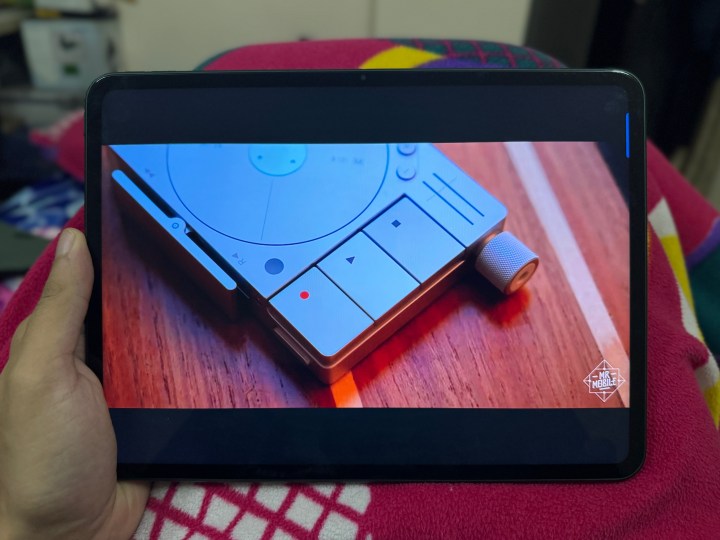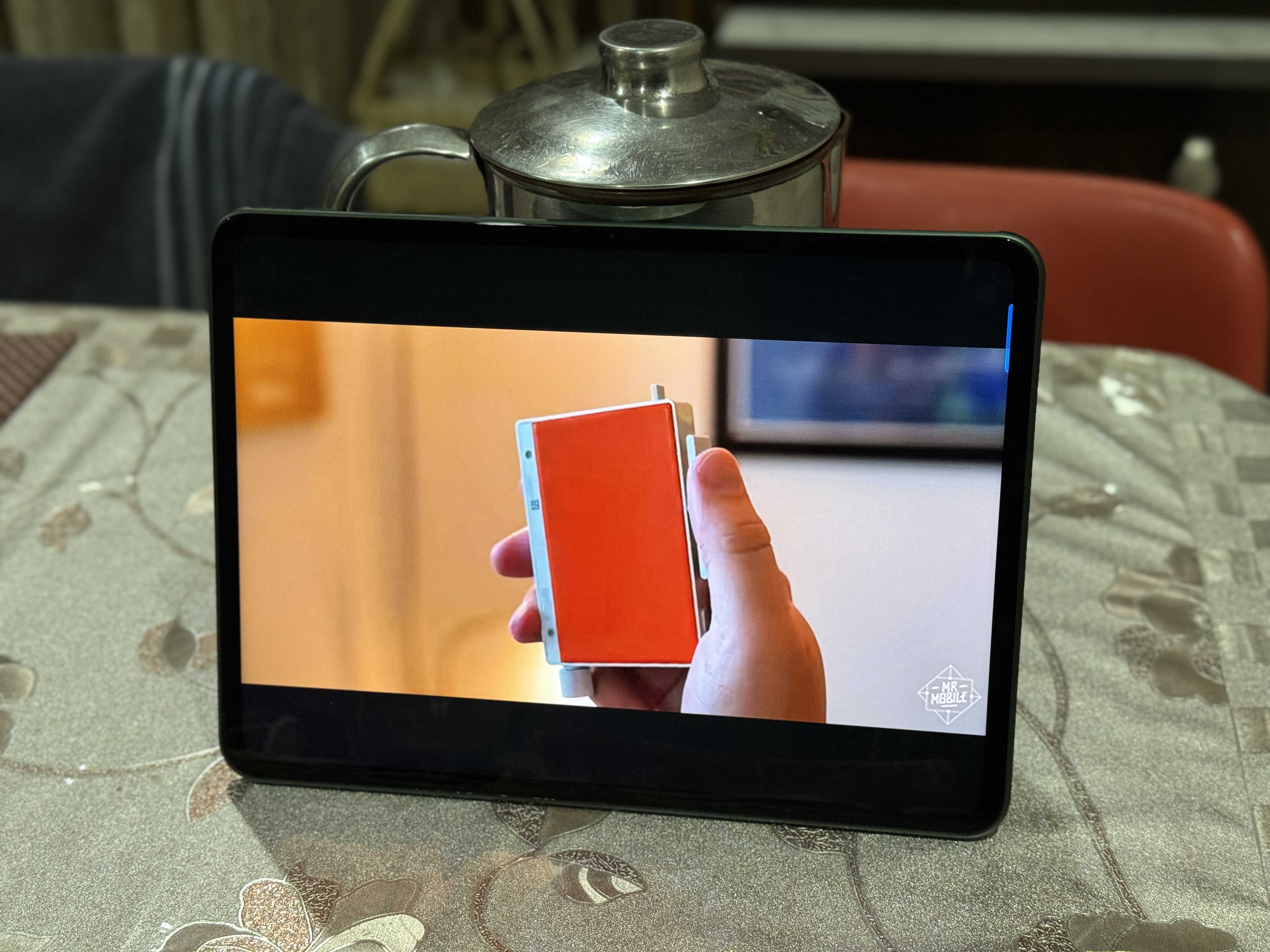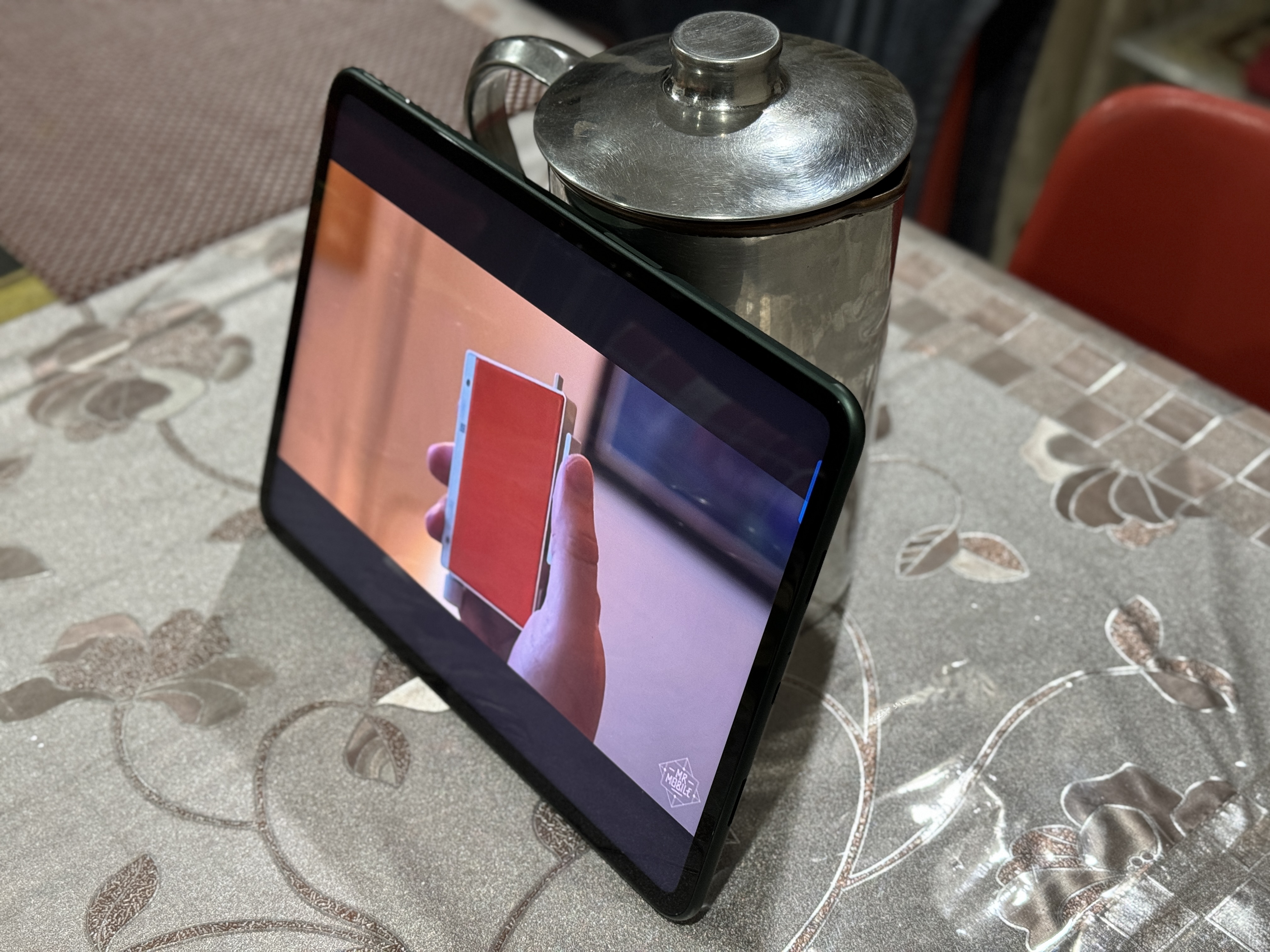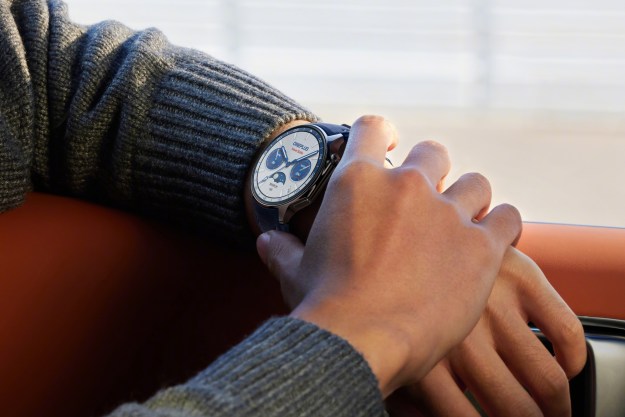
Tablets made a comeback during the pandemic, which saw an increase in content consumption and work from home. As a result, several phone manufacturers entered the race to launch tablets. For Google, it was a re-entry, while for OnePlus, it was the start of a new product line. I’ve had the privilege to use and write about these — as well as other Android tablets, including the Xiaomi Pad 6, Realme Pad, and iPads — and there’s one thing about tablet design that I’d like to change.
After years of using and reviewing so many tablets, only a few have stood out. One was the Microsoft Surface Pro series, and the other was the Lenovo Yoga Smart Tab. Both of these featured a built-in kickstand, which I believe is an integral part of using a tablet — and something every tablet should adopt in 2024.
All tablets need a built-in kickstand
In my experience, a tablet has two major use cases. First, you use it as a content consumption device, which includes watching movies/TV shows and reading. Second, you need a bigger screen than your phone but a smaller one than your laptop to get some work done on the go, which includes attending online meetings, editing documents, and more. Ideally, you should have a keyboard case for the latter, but you likely don’t need to buy a keyboard case when it comes to entertainment.
If you are buying a tablet for media consumption, you’d want to place it in a horizontal orientation. For this, you’d either need an external object like a jug or water bottle (don’t judge me, I want to watch videos while eating) to place your tablet on. Alternatively, you can buy a folio case. The latter should be the ideal scenario; however, a folio case isn’t the best way to mount a tablet for movies because it’s set at a single angle, which can’t be adjusted.
I want my tech to adjust to me, not vice versa. But with tablets, I adjust to them, so I can get a viable experience. It’s me adjusting my seating angles while in bed so I can see the display at a comfortable angle. And that’s where I miss having a Microsoft Surface Pro.

Before I shifted to the Apple ecosystem in 2020, I used to daily-drive the Surface Pro 5. It’s a slim 2-in-1 that used to be my work machine as well as my media consumption device. The latter was made possible by the solid kickstand, which could go from almost 30 degrees to up to 150 degrees.
I want my tech to adjust to me, not the other way around.
The kickstand allowed me to be flexible with the angle on my Surface Pro. For instance, on cozy winter nights with my half-sitting-half-lying body, I had it on my tummy at around 40 degrees, whereas it’d be approximately 60 to 70 degrees on my lap when sitting. This can’t be done with folio cases or, in many instances, with keyboard cases.
The Android tablets that we’ve been getting lately lack design innovation. It’s unlikely that Apple will change the design of iPads, but Android tablet manufacturers have experimented in the past. The last time I used a kickstand on a non-Surface Pro tablet was the Lenovo Tab Yoga, which was abandoned long ago. If I’m buying a tablet for media consumption, I’d like for it to have a built-in kickstand to let me have it in a watchable position without needing an external accessory. I like Google Pixel Tablet‘s case which allows you to pop up the tablet easily. but it isn’t the ideal solution.
Android tablets are perfect for this

Considering my recent experiences with the OnePlus Pad, and how Android interacts with keyboard cases, almost all
I’m not asking Android tablet makers to copy the Surface Pro design but to stop playing it safe. Lenovo has shown us in the past that it can be done. I shouldn’t have to buy an accessory (which also doesn’t solve the issue) for a primary use case.
For 2024, I wish to see a design revolution in Android tablets — a design revolution in which every Android tablet has its own built-in kickstand. It may be far-fetched and wishful thinking, but we’d be better off if it happened.
Editors' Recommendations
- Smartwatches are in big trouble
- Six months later, is the OnePlus Open still worth it? I found out
- How this surprise OnePlus feature changed my smartphone photos forever
- The OnePlus 12R is still one of 2024’s best smartphone deals
- A new Google Pixel Tablet is coming, but it’s not what you think





